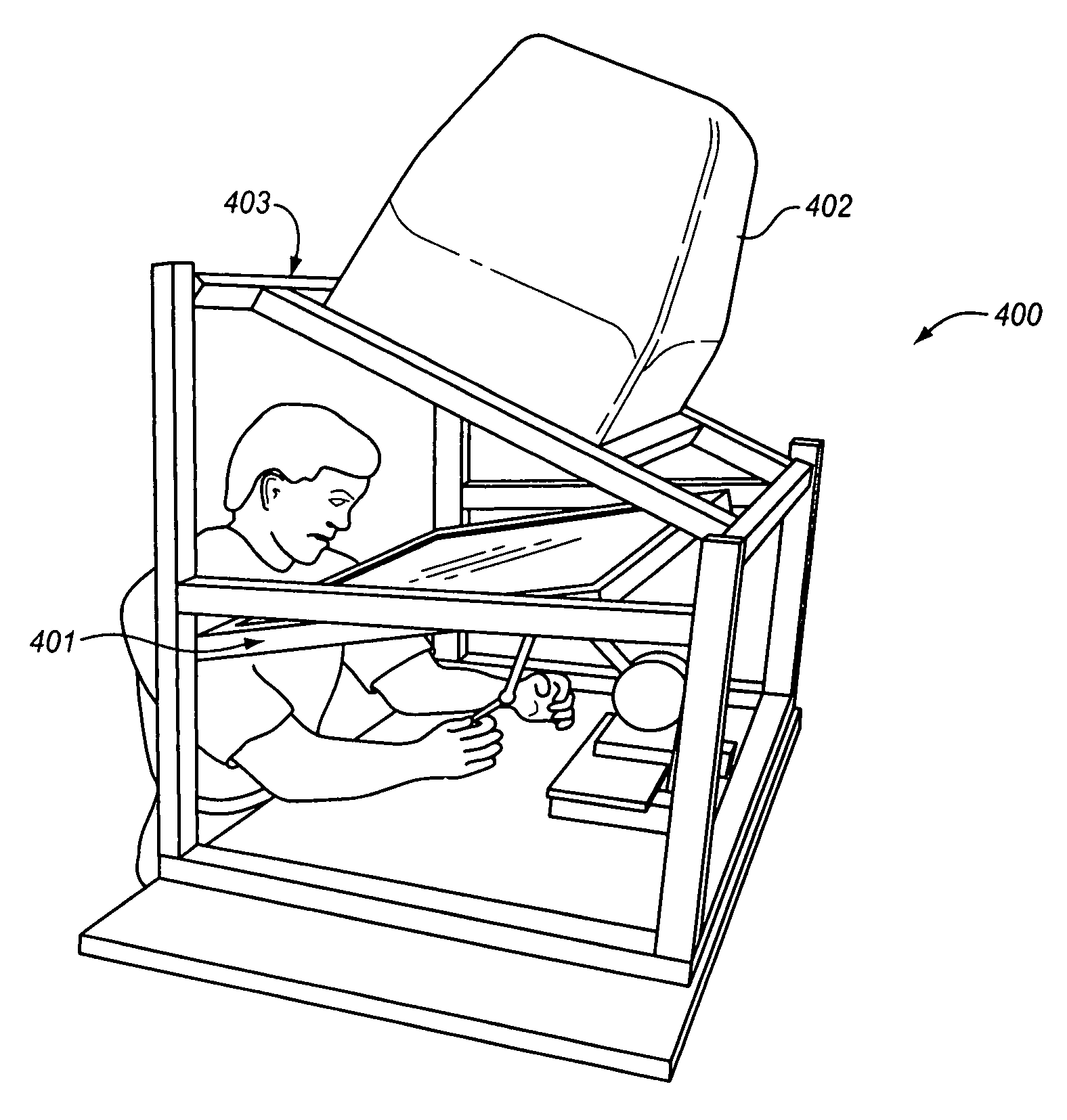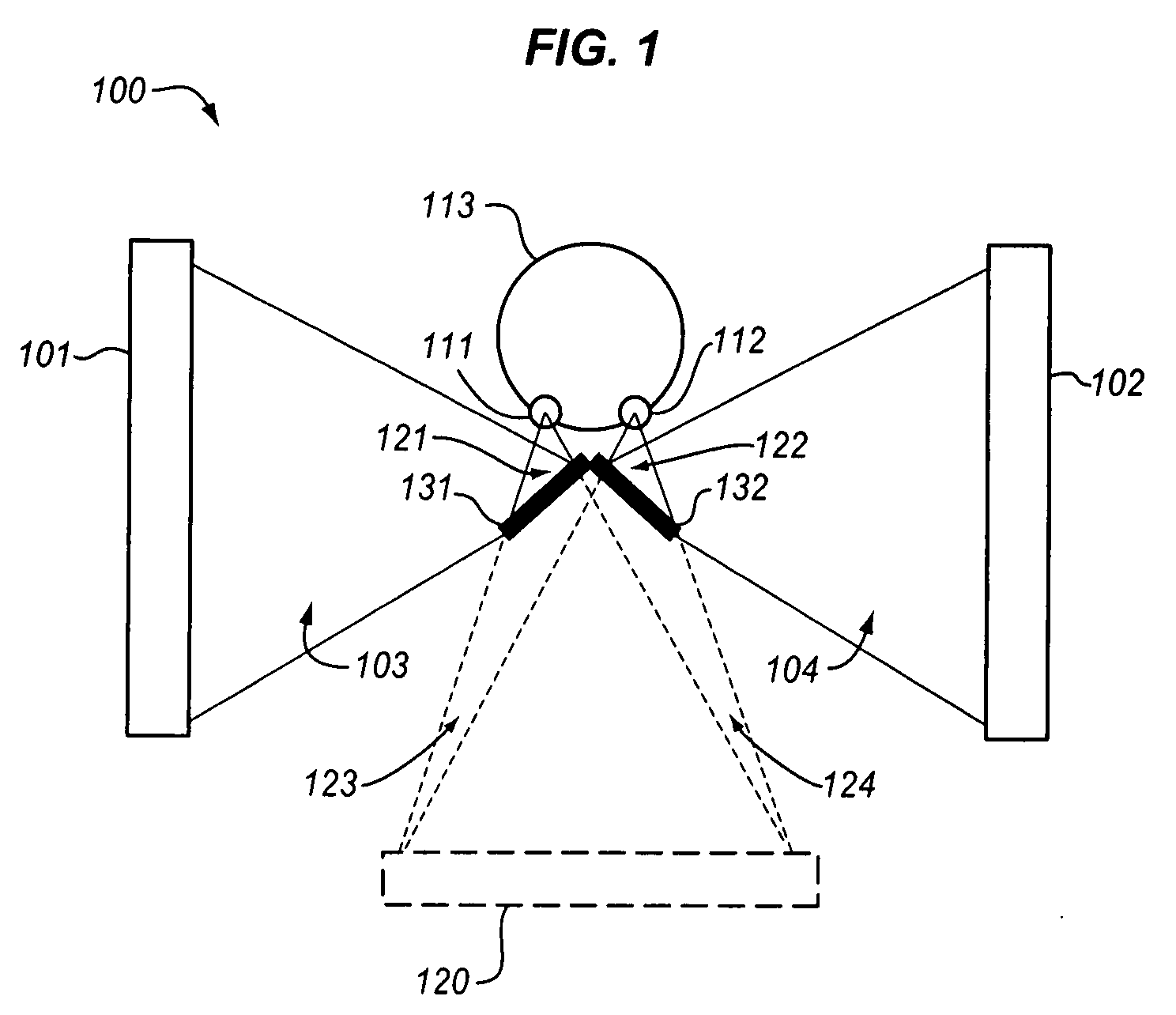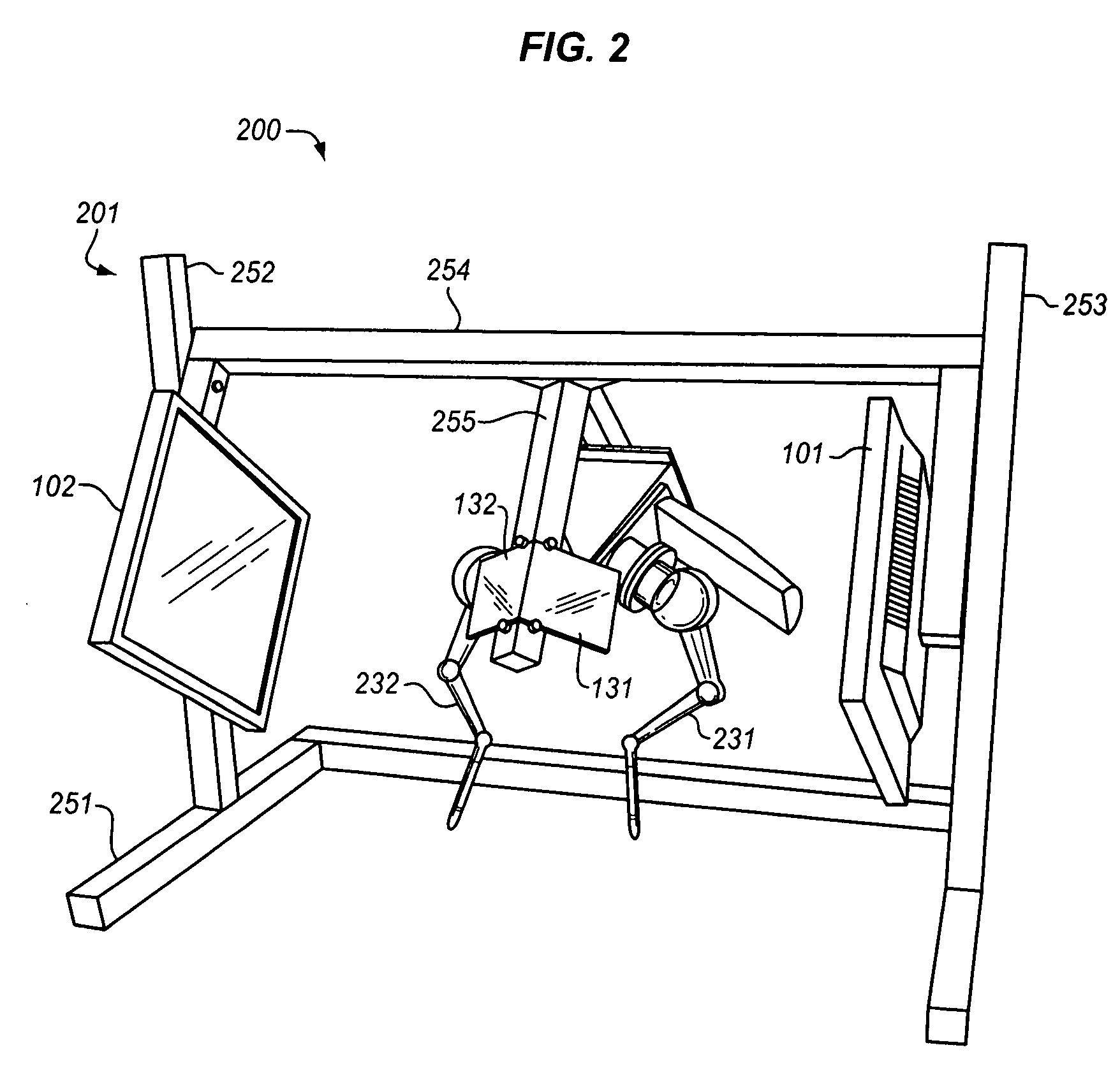Terminal device for presenting an improved virtual environment to a user
a terminal device and virtual environment technology, applied in repeater circuits, pulse techniques, instruments, etc., can solve the problems of losing the market of lcd, increasing the cost of lcd, and extinction, so as to improve the stereo graphic display, reduce the strain on the eyes of users, and increase spatial and temporal resolution
- Summary
- Abstract
- Description
- Claims
- Application Information
AI Technical Summary
Benefits of technology
Problems solved by technology
Method used
Image
Examples
Embodiment Construction
Categories of Virtual Reality Systems
[0017]Rear-projection-based virtual reality (VR) devices create a virtual environment by projecting stereoscopic images on screens located between the users and the image projectors. These displays suffer from occlusion of the image by the user's hand or any interaction device located between the user's eyes and the screens. When a virtual object is located close to the user, the user can place their hand “behind” the virtual object. However, the hand always looks “in front” of the virtual object because the image of the virtual object is projected on the screen. This visual paradox confuses the brain and breaks the stereoscopic illusion.
[0018]Another problem of regular virtual reality devices displaying stereo images is known as the “accommodation / convergence conflict” (FIGS. 3A-3C). The accommodation is the muscle tension needed to change the focal length of the eye lens in order to focus at a particular depth. The convergence is the muscle ten...
PUM
 Login to View More
Login to View More Abstract
Description
Claims
Application Information
 Login to View More
Login to View More - R&D
- Intellectual Property
- Life Sciences
- Materials
- Tech Scout
- Unparalleled Data Quality
- Higher Quality Content
- 60% Fewer Hallucinations
Browse by: Latest US Patents, China's latest patents, Technical Efficacy Thesaurus, Application Domain, Technology Topic, Popular Technical Reports.
© 2025 PatSnap. All rights reserved.Legal|Privacy policy|Modern Slavery Act Transparency Statement|Sitemap|About US| Contact US: help@patsnap.com



